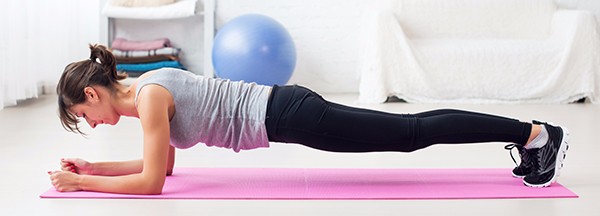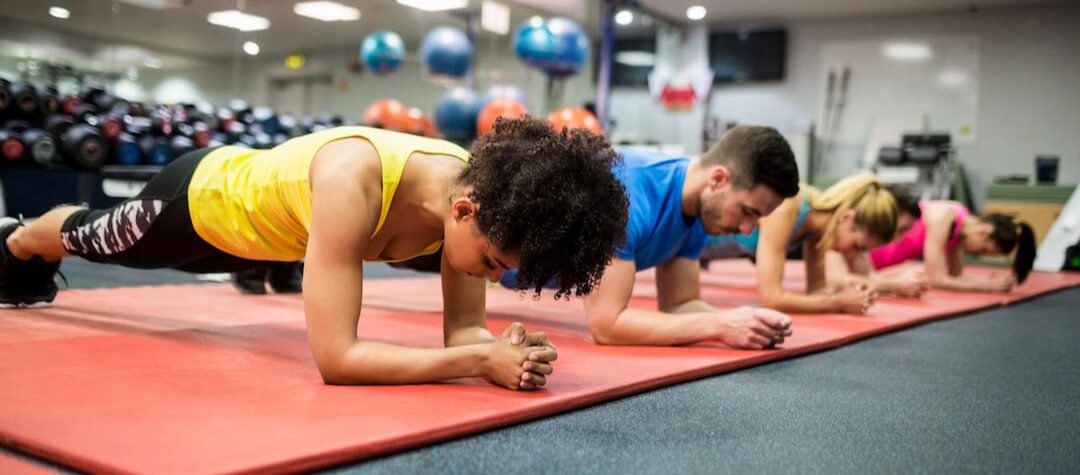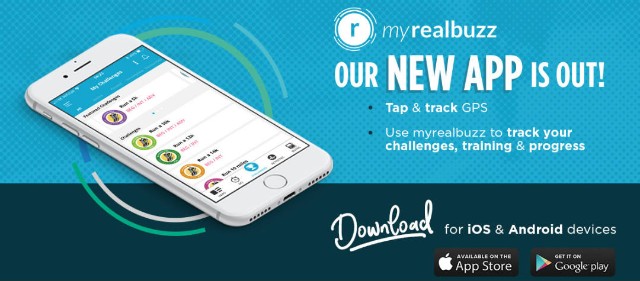Developing a strong core can really aid a runner’s performance. Find out what three core exercises you should be really be doing, according to our marathon expert.
People often ask what kind of core exercises you should do to help with your running and to be honest there are too many exercises to even name. Picking the ones which are right for you will depend on how much gym and core work you’ve done in the past, and what your starting point is.
I’ve decided to just concentrate on three of them because they can work for everyone. If you’ve only been running and neglected the gym work completely all is not lost, because all the exercises I am going to mention can be altered slightly to make them more difficult. The progression of the exercises can continue the better you get at them.
1. Plank

This is probably one of the most common core exercises and you’ll definitely have seen this done before. You start by laying face down and the only contact with the floor should come from your toes and the area from your elbows to your hands. The idea is that you keep your back as straight as possible. The tension should be coming from your stomach muscles as these are being used to support your body and stop you hunching your back. The amount of time you should hold this exercise for depends on how strong your core is.
You might not feel anything for the first 20 seconds, maybe even 30 seconds, in which case holding it for 60 seconds is possible. It’s important that you maintain your position, because if you start arching your back it will decrease the amount of time you can hold it for.
You can use the plank to work either side of your abs by adjusting your position and facing to the side. This time you need to hold your body off the ground and prevent it from dipping at the hips. Again, the only contact with the ground should be the sides of your feet and also from your elbow to your wrist. You can do a little circuit of these exercises making sure you cover each of the 3 areas (front, left and right).
Once you’ve mastered the plank you can progress to a roll out. For this you’ll need to use a weight-lifting bar with some weights attached either side. The start position will be on your knees, with your hands on the bar facing forwards. Keeping your arms straight roll the bar forwards as far as you can go bearing in mind that you have to return to the starting position! You need to lock your core and your back keeping a nice straight line as you roll forward. You will find that the further forward you go, the harder it is to roll back. Remember to keep your arms straight and your core locked or engaged at all times. Once you get back to the starting position, take a breath, correct your posture and go all over again.
2. Dead bugs
As the name would suggest, you’re going to look like a dead bug while you’re doing this exercise! The starting position is lying on your back with your arms straight and pointing to the sky, with your legs lifted off the ground at a 90 degree angle. If you were on all fours, that’s the angle your legs should be.
To start the exercise drop your legs and straighten them at the same time until your heels are about an inch off the floor (they shouldn't touch) and at the same time, do the same with your arms until they are stretched out an inch from the floor. You should now be completely flat with just your arms and feet off the floor and it’s really important to make sure your lower back remains in contact with the ground. You can do this by adjusting your abs/hips - this will ensure you are using the correct muscle groups and not putting a strain on your back. From this position go back to the starting position and then repeat as many reps as you would like to do.
The exercise can be made harder by holding a weight in your hands while performing the dead bugs, and harder still by holding a weight on your legs or between your feet. This will mean you’re adding resistance to the exercise and working those core muscles even harder!
3. The suitcase carry
Again, as the name suggests you walk carrying a weight with your arms down beside you. Start by picking up a weight and don't be scared to go heavy here because you want something that challenges you.
When you pick up the weight, hold it like you would hold a shopping bag, keeping your shoulders square and remain as upright as possible.
Walk a set distance between 30-60m, put th e weight down (bending at the knees), pick up the weight in the other hand, and walk back. You'll need to maintain your stance and this is done by activating your core. The stronger your core , the heavier the weight you'll be able to carry.
Why a strong core helps runners
Having a strong core is extremely good for injury prevention because it will mean that you’re more stable when you run which then reduces the chances of picking up any lower back problems . Keeping everything in line and moving correctly will also mean that those nagging knee pains should subside. Core exercises don't need to be overly time consuming, 20 minutes three times a week is enough to make sure you keep on top of it. Remember that as long as the exercises are done correctly you’ll make sure that your core is 'activated'. If you’re unsure about that, it might be worth seeing a specialist physio or even a weights coach.
















